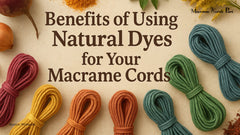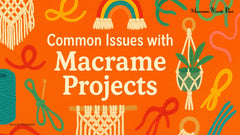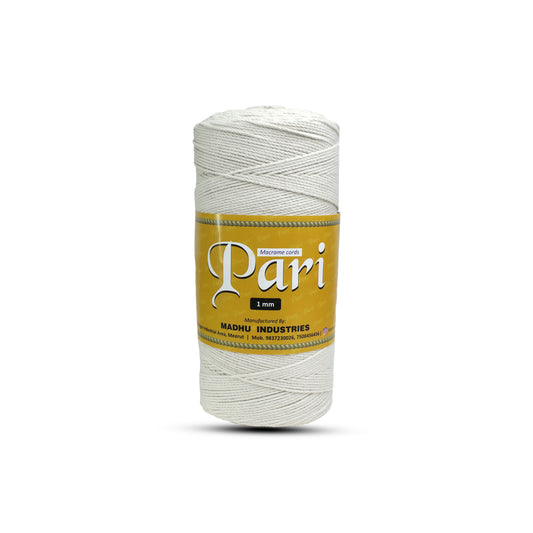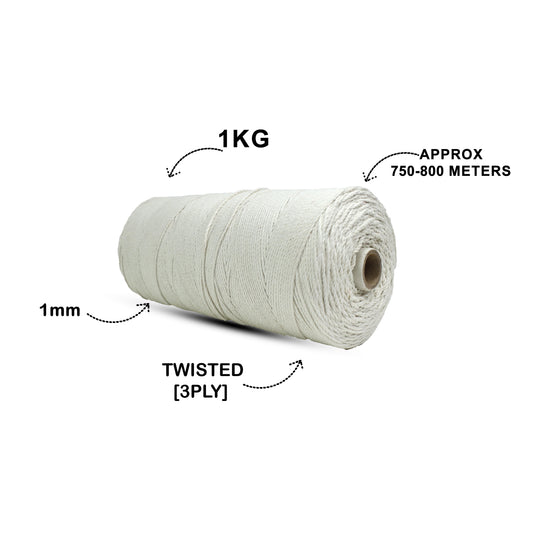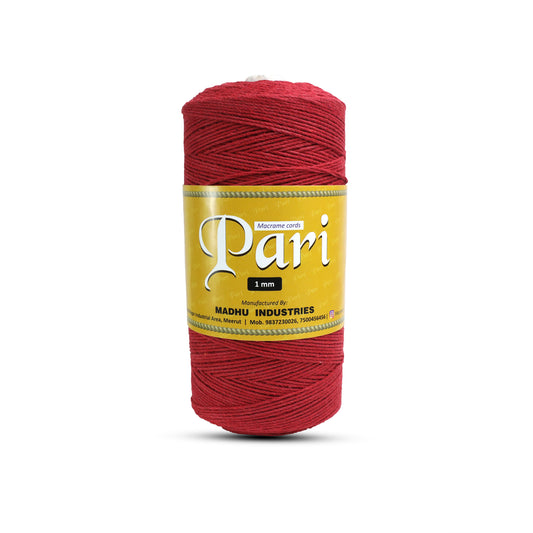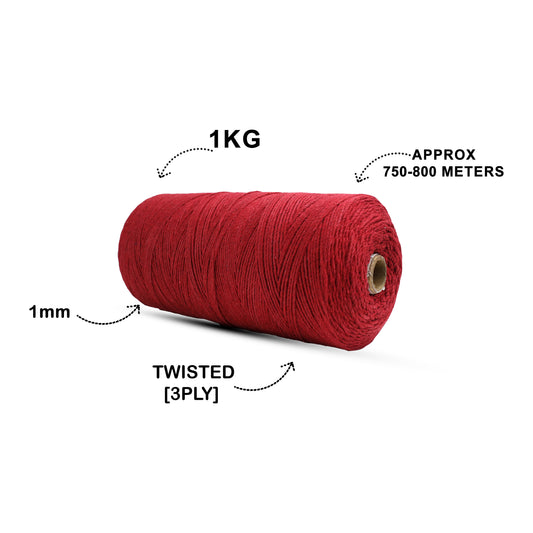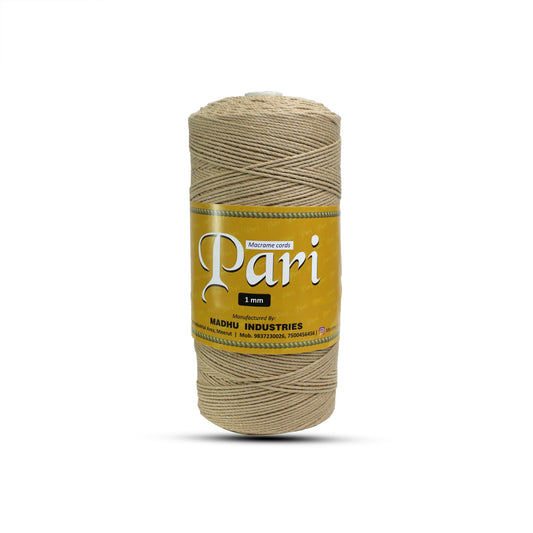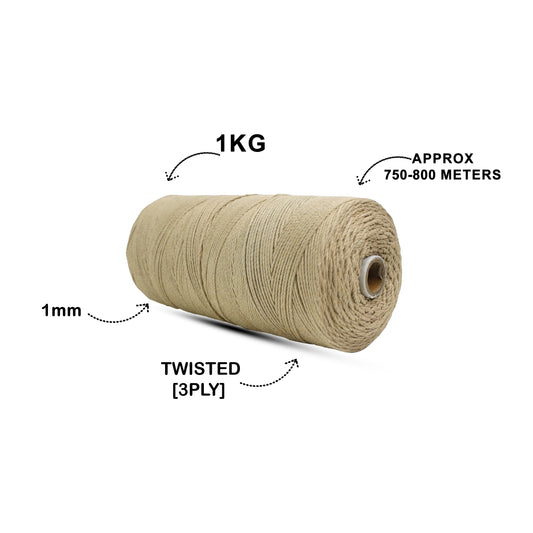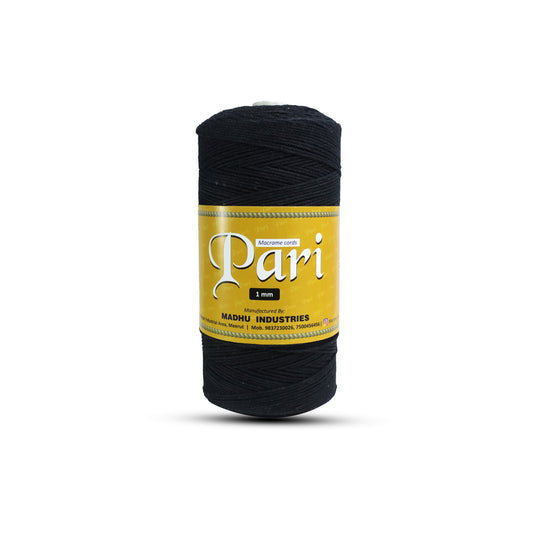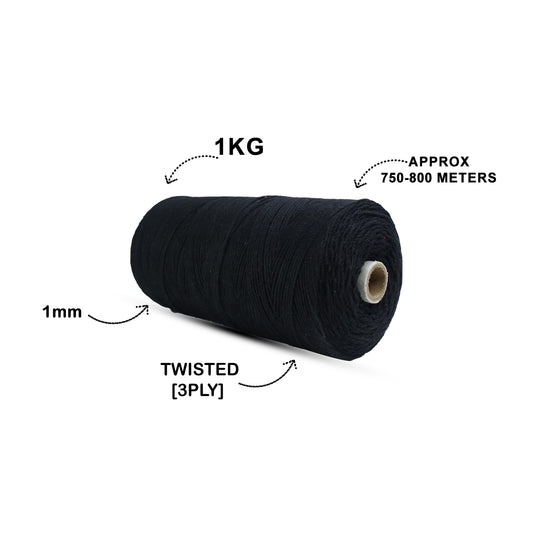The Importance of Tension in Macrame Knots
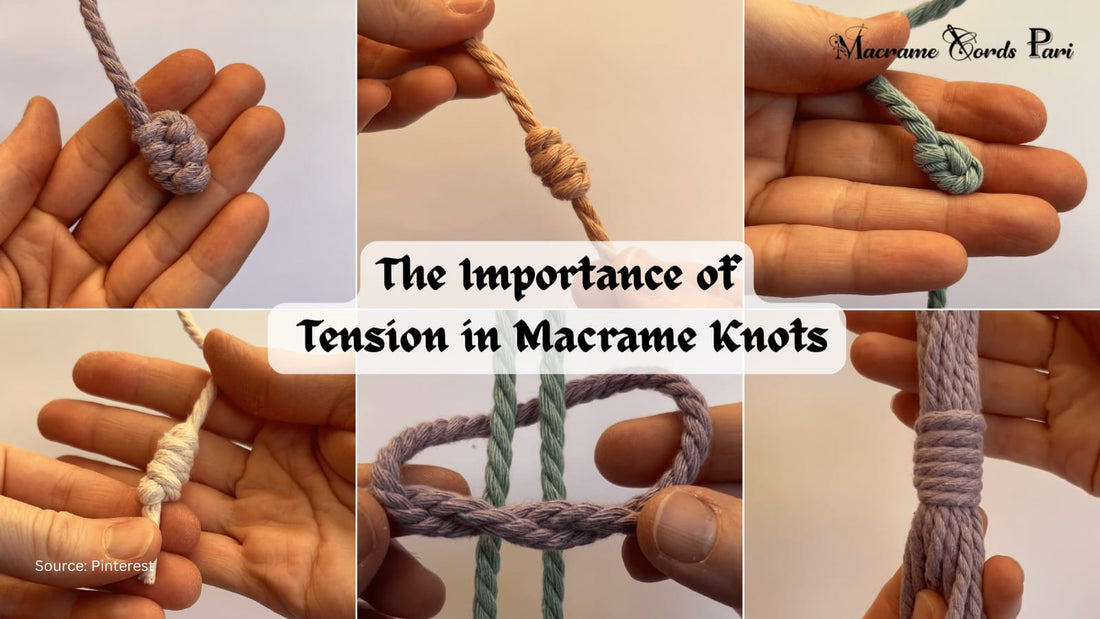
Macramé shines with a secret of celebration, perfection is not in the knot itself, but in the tension that binds it!
If you’ve ever tried macramé, you already know this secret: the real magic lies not in the knots themselves but in the stylish way of crafting it. But do you know how tightly or loosely macrame knots pull them? Tension is the hidden gem of every masterpiece, deciding whether the wall hanging flows gracefully or the plant hanger stands sturdy and balanced in the air. It all depends on the quality of tension among the macrame cords.
Don't forget that the tension is the soul of macrame design. It is too tight, the knots look stiff and strained, and if it is too loose, the macrame piece risks sagging into chaos. The perfect balance and macrame algorithm create harmony, beauty, and durability. The sustainability and strength of macrame cords tend to redefine and improve the quality of home decor.
In this blog, the macramé artist will understand why tension matters so deeply in macramé and how skillfully it can elevate the eminence of the craft. Let us understand the tensile strength and its dynamic value in macrame products.
Why Tension Plays a Vital Role in Macrame Products
The tensile strength of the macrame product is redefining the spirit of macrame products. For instance, if you have two weavers. One who pulls each knot too tight, or some left slack, such irregularities in knots affect the quality and shape of the product. A piece that looks uneven, with cords twisting in odd directions. The other keeps her knots steady, her rhythm consistent. Her wall hanging drapes smoothly like a silent wall speaking happiness and prosperity.
So now you will understand that the difference in tension can make multiple variations of the macrame. Let us understand:
Uniformity: Even tension keeps knots aligned and patterns symmetrical. The uneven tension keeps the knots hazy and chaotic, creating an unsymmetrical pattern.
Strength: The consistent pulling ensures that the cords hold together, especially for functional projects like swings, hammocks, or plant hangers. So, it is necessary to keep the strength in alignment and proper functioning.
Aesthetic Balance: The aesthetic charm of macrame products comes with proper tension. It gives macrame designs a professional, refined, and polished look.
Macramé is as much about discipline as it is about creativity. Tension is what separates a “first attempt” from a piece that people mistake for home décor. So work precisely with delicacy and softness.
Symphony Between Tight and Loose Knots
Nothing is truer than this, the tension is variable for each kind of macrame product. Instead, every project demands its own rhythm and symphony.
Tight Tension: The tight tension is mandatory for structured items like plant hangers, baskets, and chair swings. The knots hold firm, supporting weight and maintaining the shape of the macrame products effectively.
Medium Tension: The medium tension of macrame products is crucial for wall hangings and dreamcatchers. Artists must want a balance of structure and flow.
Loose Tension: Loose tension is breathtaking for multiple products. It works beautifully in decorative fringes, tassels, or curtains that need to sway freely.
When you weave, ask yourself: Does this product want to feel strong and sturdy, or soft and flowing? The answer will guide you through the process of creating macrame products efficiently.
Tension and Creativity Go Hand in Hand
For any kind of art, control over tension and alignment comes with proper practice. But multiple things define the spirit of macrame art. The consistent pulling of knots is necessary to nurture the quality of macrame products. The artist needs to use both hands for the creation of macrame art. It tends to keep the product balanced and sustainable. Balancing comes with consistent motion of the hands.
After every macrame knot, the artist should take a pause and analyse the art. Is it going in harmony or not? It is necessary to check whether it speaks of alignment or getting loose with the increase in knotting. Soft cotton cords allow the flexibility, while braided cords add more tension and strength to the art. There exists a beautiful paradox: while tension demands discipline, it also gives you freedom. Once the artist understands how tight or loose knots affect the outcome, they can play with them deliberately.
If the artist wants a 3D ripple effect in the wall hanging? He/she should understand it by the variability in the tension. If you want to make a hammock that feels both strong and soft? Blend firm knots with flowing fringes with braided cords. You will get the result consequently. When the artist masters tension, he stops merely making knots and starts sculpting with fibre for vibrant home decor.
Elegance and Innovation in art come with strong tension and precision
Sometimes the skilled artist faces resistance in the creation of macrame products. It might be due to the cord quality or the style of knotting. But at Macrame Cords Pari, the premium quality of single-stranded, twisted or braided cords makes the product of creative knots breathtaking. The 40+ vibrant shades of soft cotton cords that glide like silk yet grip firmly and thereby making it easier to maintain even tension across the last knot.
Tension is the heartbeat of macramé. It is a prerequisite for transforming a collection of cords into something that is alive, balanced, and majestic. Once the artist tunes into it, the craft blossoms from hobby to artistry. So next time if you step out for a knot, pause. Feel the cord between the fingers. Feel its pull, then adjust accordingly. Then you will get something marvellous and rejuvenating enough for home decor.
Your home will bling into the decorative art with the strength and tension of Macrame Cords Pari's rich-quality cords!



